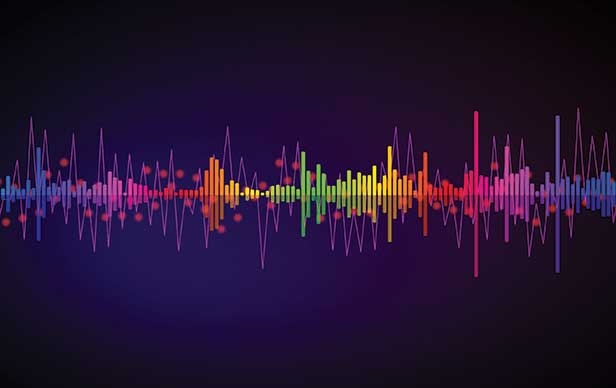April 29, 2019
How to Succeed with Sonic Logos
Sonic branding is becoming an increasingly trendy marketing tool. But what exactly is it? Marketing expert Gary Vaynerchuk calls it “the audio equivalent of a brand’s username.” Indeed, a sonic logo can be a seconds-long tune, a few notes, a sung phrase or even a single sound. Think McDonald’s “Ba da ba ba ba, I’m Lovin’ It!” or the famous Intel “bong.” Recall the NBC chimes, T-Mobile’s ringtone-like sound logo, and Farmers’ Insurance jingle “We are Farmers, bum ba dum bum bum bum bum.” Surely, you also know “Nationwide is on your side.” Get the idea?

Sonic branding figures to grow in importance in the years ahead as voice-related web searches and voice commerce rise.
Catchy tunes aside, sonic branding matters because it can be an extremely effective way of distinguishing your company in a crowded marketplace and help trigger positive emotions about your business in target audiences. Also, it’s set to grow in importance in the years ahead as voice-related web searches and voice commerce rise – and as more people rely on in-home, voice-directed virtual assistants like Amazon Echo.
So how do you create a sonic logo? Here are some ideas:
1. Be Original
Using sounds that are generic or, even worse, another brand’s sonic logo, will do little to distinguish you – and could also run afoul of copyright/trademark law.
2. Undertake a Brand Inventory
What’s your brand all about? What do you want people to associate most closely with your business? What type of audience do you target? Flush out thorough answers to these questions. After all, you can’t create a sonic logo that represents your brand unless you understand its essential qualities.
3. Look for Auditory Clues
It’s possible you’re already using music or other auditory elements in podcasts, videos, presentations, web pages, at trade show booths or in your advertising. Maybe there’s a common sound theme or other elements that help paint a picture of how your sonic logo should sound. Reviewing your brand’s auditory profile can be a potential source of inspiration.
4. Partner With Professionals
Maybe you’re extremely fortunate to have talented musicians/audio engineers on your marketing team who can spearhead creating your sonic logo, but if you’re like most firms, that’s not the case. You’re going to need to work with professionals, be they marketing/advertising agencies that include sonic/audio branding among their services or providers like Sixième Son, Audiobrain and amp whose primary business is devoted to audio/sonic branding.
5. Make Sure They ‘Get’ You
It’s pivotal the partners you enlist to craft your sonic logo truly understand your brand. Share things like your mission statement, short and long term goals, information on your current and planned marketing and branding initiatives, and how/where you plan to use the sonic logo with them. Provide a portrait or portraits of your typical clients, and convey how you’d like ideal customers and prospects to view your brand. It could also be worthwhile to create a list of three to seven words that best characterize your brand for sonic pros to consider.
6. Don’t Settle
Provide your audio partner with feedback through the sonic logo development process to make certain things are on the right track. When you hear the proposed final logo, it should hit you instantly as representative of your brand. If it doesn’t, you probably need to go back to the drawing board.